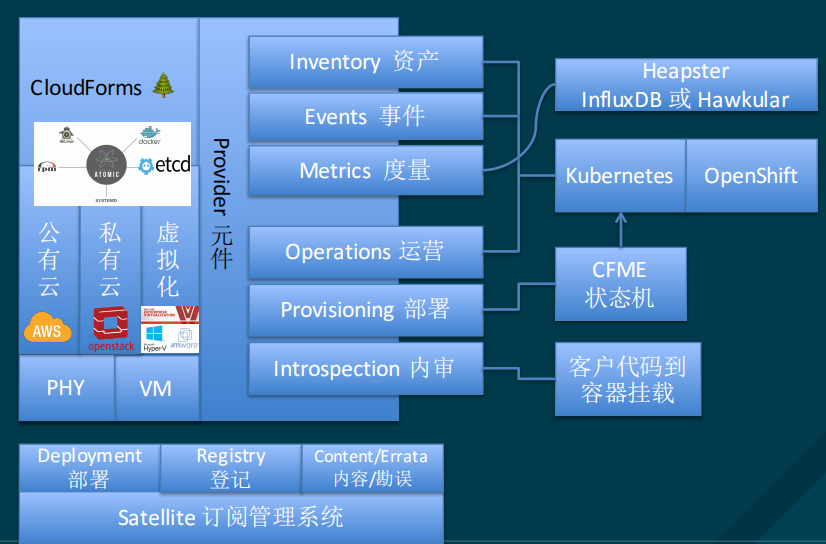前言
首先确定springboot在spring基础上主要做了哪些改动:
- 内嵌tomcat
- spi技术动态加载
一、基本实现
1. 建一个工程目录结构如下:
springboot: 源码实现逻辑
user : 业务系统

2.springboot工程项目构建
1. pom依赖如下
<dependencies><dependency><groupId>org.springframework</groupId><artifactId>spring-context</artifactId><version>5.3.18</version></dependency><dependency><groupId>org.springframework</groupId><artifactId>spring-web</artifactId><version>5.3.18</version></dependency><dependency><groupId>org.springframework</groupId><artifactId>spring-webmvc</artifactId><version>5.3.18</version></dependency><dependency><groupId>javax.servlet</groupId><artifactId>javax.servlet-api</artifactId><version>4.0.1</version></dependency><dependency><groupId>org.apache.tomcat.embed</groupId><artifactId>tomcat-embed-core</artifactId><version>9.0.60</version></dependency></dependencies>
2. SpringBoot时,核心会用到SpringBoot一个类和注解:
- @SpringBootApplication,这个注解是加在应用启动类上的,也就是main方法所在的类
- SpringApplication,这个类中有个run()方法,用来启动SpringBoot应用的.
下面一一实现:
@Retention(RetentionPolicy.RUNTIME)@Target(ElementType.TYPE)@Configuration@ComponentScan@Import(KcImportSelect.class)
public @interface KcSpringBootApplication {}
public class KcSpringApplication {public static AnnotationConfigWebApplicationContext run(Class cls){/*** spring启动步骤:* 1、构建上下文对象* 2、注册配置类* 3、刷新容器*/AnnotationConfigWebApplicationContext context=new AnnotationConfigWebApplicationContext();context.register(cls);context.refresh();/*** 内嵌tomcat\jetty 启动*/WebServer webServer=getWebServer(context);webServer.start();return context;}/*** 获取服务,有可能tomcat\jetty或者其他服务器* @param context* @return*/public static WebServer getWebServer(AnnotationConfigWebApplicationContext context){Map<String, WebServer> beansOfType = context.getBeansOfType(WebServer.class);if(beansOfType.isEmpty()||beansOfType.size()>1){throw new NullPointerException();}return beansOfType.values().stream().findFirst().get();}}3.内嵌tomcat、jetty服务器实现
项目根据pom配置动态实现tomcat\jetty内嵌要求如下:
- 如果项目中有Tomcat的依赖,那就启动Tomcat
- 如果项目中有Jetty的依赖就启动Jetty
- 如果两者都没有则报错
- 如果两者都有也报错
首先定义服务接口WebServer
public interface WebServer {void start() ;
}
tomcat服务实现:
public class TomcatWebServer implements WebServer {private Tomcat tomcat;public TomcatWebServer(WebApplicationContext webApplicationContext) {tomcat = new Tomcat();Server server = tomcat.getServer();Service service = server.findService("Tomcat");Connector connector = new Connector();connector.setPort(8081);Engine engine = new StandardEngine();engine.setDefaultHost("localhost");Host host = new StandardHost();host.setName("localhost");String contextPath = "";Context context = new StandardContext();context.setPath(contextPath);context.addLifecycleListener(new Tomcat.FixContextListener());host.addChild(context);engine.addChild(host);service.setContainer(engine);service.addConnector(connector);tomcat.addServlet(contextPath, "dispatcher", new DispatcherServlet(webApplicationContext));context.addServletMappingDecoded("/*", "dispatcher");}@Overridepublic void start() {try {System.out.println("tomcat start......");tomcat.start();}catch (Exception e){e.printStackTrace();}}
}
jetty服务实现(具体实现逻辑没写,具体实现逻辑类似tomcat实现)
public class JettyWebServer implements WebServer{@Overridepublic void start() {System.out.println("jetty start......");}
}
思考:jetty\tomcat都已实现,总不能用if/else这样决定用哪个服务扩展性太差,基于此,就联想到spring的Condition条件注解和参考springboot中的OnClassCondition这个注解。
具体实现如下:
public class KcOnClassCondition implements Condition {@Overridepublic boolean matches(ConditionContext context, AnnotatedTypeMetadata metadata) {Map<String, Object> annotationAttributes = metadata.getAnnotationAttributes(KcConditionalOnClass.class.getName());String value = (String) annotationAttributes.get("value");try {context.getClassLoader().loadClass(value);} catch (ClassNotFoundException e) {return false;}return true;}
}
@Configuration
public class WebServerConfiguration{@Bean@KcConditionalOnClass("org.apache.catalina.startup.Tomcat")public TomcatWebServer tomcatWebServer( WebApplicationContext webApplicationContext){return new TomcatWebServer(webApplicationContext);}@Bean@KcConditionalOnClass("org.eclipse.jetty.server.Server")public JettyWebServer jettyWebServer(){return new JettyWebServer();}
}
至此,springboot简化版已实现完成,首先启动看看

4.基于JDK的SPI实现扫描AutoConfiguration接口
- AutoConfiguration接口
public interface AutoConfiguration {
}- 实现DeferredImportSelector接口实现类(具体为什么实现Import这个接口,请看以前的文章,主要这个接口具有延迟功能)
public class KcImportSelect implements DeferredImportSelector {@Overridepublic String[] selectImports(AnnotationMetadata importingClassMetadata) {ServiceLoader<AutoConfiguration> load = ServiceLoader.load(AutoConfiguration.class);List<String> list = new ArrayList<>();for (AutoConfiguration autoConfiguration : load) {list.add(autoConfiguration.getClass().getName());}return list.toArray(new String[0]);}
}
- 即KcSpringBootApplication注解导入该配置类
@Retention(RetentionPolicy.RUNTIME)@Target(ElementType.TYPE)@Configuration@ComponentScan@Import(KcImportSelect.class)
public @interface KcSpringBootApplication {}
- WebServerConfiguration实现AutoConfiguration接口
@Configuration
public class WebServerConfiguration implements AutoConfiguration{@Bean@KcConditionalOnClass("org.apache.catalina.startup.Tomcat")public TomcatWebServer tomcatWebServer( WebApplicationContext webApplicationContext){return new TomcatWebServer(webApplicationContext);}@Bean@KcConditionalOnClass("org.eclipse.jetty.server.Server")public JettyWebServer jettyWebServer(){return new JettyWebServer();}
}
- 在springboot项目下创建META-INFO/service 接口全路径命名的文件,文件内容接口实现类全路径

至此,springboot简易版已全部实现。
二、应用业务系统引入自己构建的springboot
1、user项目的pom依赖(引入自己构建的springboot项目)
<dependencies><dependency><groupId>com.kc</groupId><artifactId>springboot</artifactId><version>1.0-SNAPSHOT</version></dependency></dependencies>
2、启动类
@ComponentScan(basePackages = {"kc.*"})@KcSpringBootApplication
public class UserApplication {public static void main(String[] args) {AnnotationConfigWebApplicationContext run = KcSpringApplication.run(UserApplication.class);System.out.println(run.getBeanFactory());}
}
3、实现具体业务类
@RestController
public class UserController {@Autowiredprivate UserService userService;@GetMapping("test")public String test() {return userService.test();}
}
@Service
public class UserService {public String test() {return "hello springboot";}
}4、启动测试访问

三、项目地址
git地址





